Quick Airline Information:
✈Airline IATA* code: AF
✈Airline ICAO* code: AFR ✈Founded: 7 October 1933 ✈Website: www.airfrance.com✈Alliance: Sky Team
✈History
✈Operations and Destinations 🌍
✈Fleet ✈️
✈Photo Slide 📷✈Safety Video 🎬
✈Airline reviews ⭐
*IATA: (International Air Transport Association)
*ICAO: (International Civil Aviation Organization)
History Menu:
Air France was formed on 7 October 1933, from a merger of Air Orient, Air Union, Compagnie Générale Aéropostale, Compagnie Internationale de Navigation Aérienne (CIDNA) and Société Générale des Transports Aériens (SGTA). Of these airlines, SGTA was the first commercial airline company in France, having been founded as Lignes Aériennes Farman in 1919.
In 1936, Air France added French-built twin engine Potez 62 aircraft to its fleet featuring a two compartment cabin that could accommodate 14 to 16 passengers. They were used on routes in Europe, South America and the Far East.
On 26 June 1945 all of France's air transport companies were nationalised. A decree of the French government granted Air France the management of the entire French air transport network. Air France appointed its first flight attendants in 1946. The same year the airline opened its first air terminal at Les Invalides in central Paris.
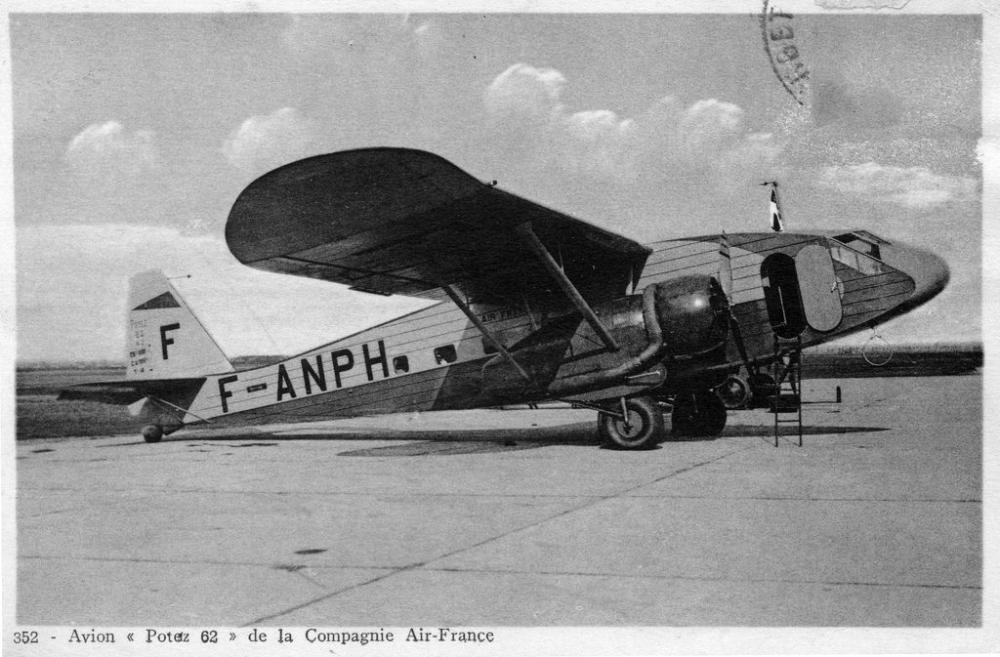
European schedules were initially operated by a fleet of Douglas DC-3 aircraft. On 1 July 1946, Air France started direct flights between Paris and New York via refuelling stops at Shannon and Gander. Douglas DC-4 piston-engine airliners covered the route in just under 20 hours. In September 1947 Air France's network stretched east from New York, Fort de France and Buenos Aires to Shanghai.
By 1948 Air France operated 130 aircraft, one of the largest fleets in the world. Between 1947 and 1965 the airline operated Lockheed Constellations on passenger and cargo services worldwide. In 1946 and 1948, respectively, the French government authorised the creation of two private airlines: Transports Aériens Internationaux – later Transports Aériens Intercontinentaux – (TAI) and SATI. In 1949 the latter became part of Union Aéromaritime de Transport (UAT), a private French international airline.
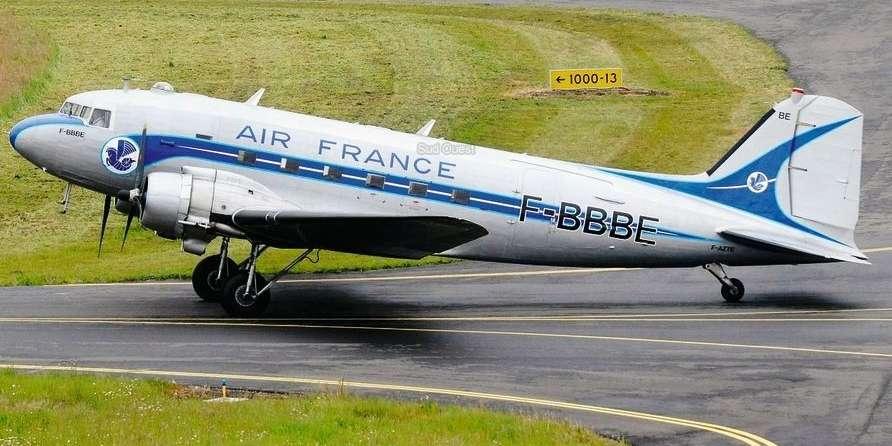
In 1952 Air France moved its operations and engineering base to the new Paris Orly Airport South terminal. Air France entered the jet age in 1953 with the original, short-lived de Havilland Comet series 1, the world's first jetliner. During the mid-1950s it also operated the Vickers Viscount turboprop, with twelve entering services between May 1953 and August 1954 on the European routes. On 26 September 1953 the government instructed Air France to share long-distance routes with new private airlines. On 23 February 1960, the Ministry of Public Works and Transport transferred Air France's domestic monopoly to Air Inter. To compensate for the loss of its domestic network Air France was given a stake in Air Inter.
The airline started uninterrupted jet operations in 1960 with the Sud Aviation Caravelle and the Boeing 707, jet airliners cut travel times in half and improved comfort. Air France later became an early Boeing 747 operator and eventually had one of the world's largest 747 fleets. From 1974, Air France began shifting the bulk of operations to the new Charles de Gaulle Airport north of Paris. In 1974, Air France also became the world's first operator of the Airbus A300 twin-engine widebody plane.
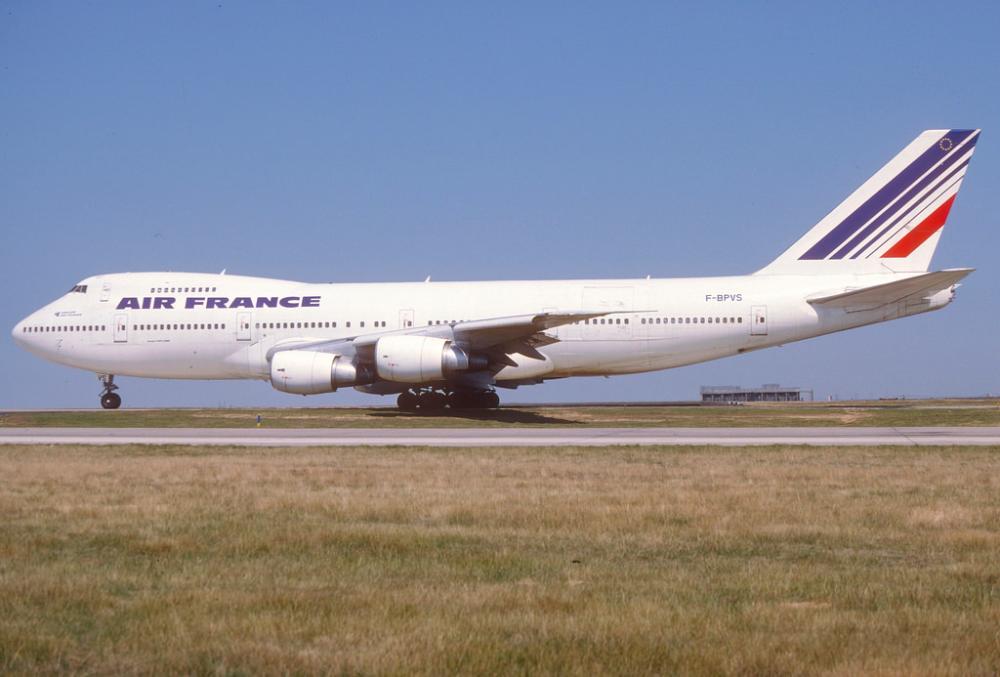
On 21 January 1976, Air France operated its inaugural supersonic transport (SST) service on the Paris (Charles de Gaulle) to Rio (via Dakar) route with Anglo-French BAC-Aérospatiale Concorde. Supersonic services from Paris (CDG) to Washington Dulles International Airport began on 24 May 1976. Services to New York (JFK) – the only remaining Concorde service until its end, commenced on 22 November 1977.
Air France became one of only two airlines – British Airways being the other – to regularly operate supersonic services, and continued daily transatlantic Concorde service until late May 2003.
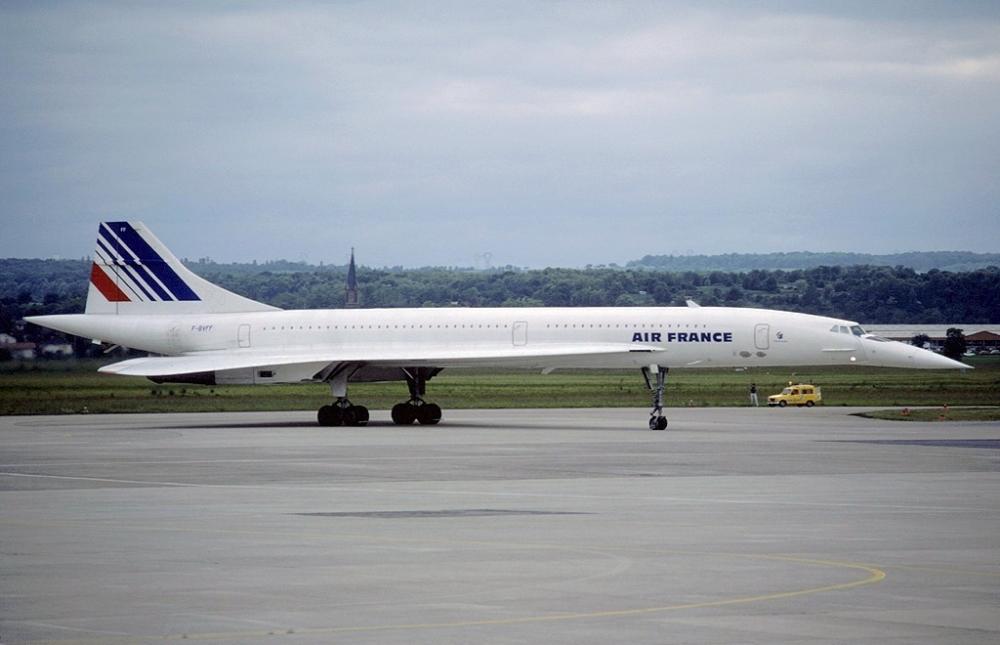
By 1983, Air France's golden jubilee, its fleet consisted of about 100 jet aircraft (including 33 Boeing 747s) and it served 150 destinations in 73 countries. This made Air France the fourth-largest scheduled passenger airline in the world, as well as the second-largest scheduled freight carrier. In 1983 Air France began passenger flights to South Korea, being the first European airline to do so.
Paris-San Francisco became the first route UTA served in competition with Air France non-stop from Paris. Air France responded by extending some non-stop Paris-Los Angeles services to Papeete, Tahiti, which competed with UTA on Los Angeles-Papeete.
In 1987 Air France together with Lufthansa, Iberia and SAS founded Amadeus, an IT company (also known as a GDS) that would enable travel agencies to sell the founders and other airlines' products from a single system.
In 1988, Air France was a launch customer for the fly-by-wire A320 narrowbody twin, along with Air Inter and British Caledonian. It became the first airline to take delivery of the A320 in March 1988, and along with Air Inter became the first airlines to introduce Airbus A320 service on short-haul routes.
On 12 January 1990, the operations of government-owned Air France, semi-public Air Inter and wholly private Union de Transports Aériens(UTA) were merged into an enlarged Air France.
On 25 July 1994, a new holding company, Groupe Air France, was set up by decree. Groupe Air France became operational on 1 September 1994. It acquired the Air France group's majority shareholdings in Air France and Air Inter. In June 1999, Air France and Delta Air Lines formed a bilateral transatlantic partnership. On 22 June 2000, this expanded into the SkyTeam global airline alliance.
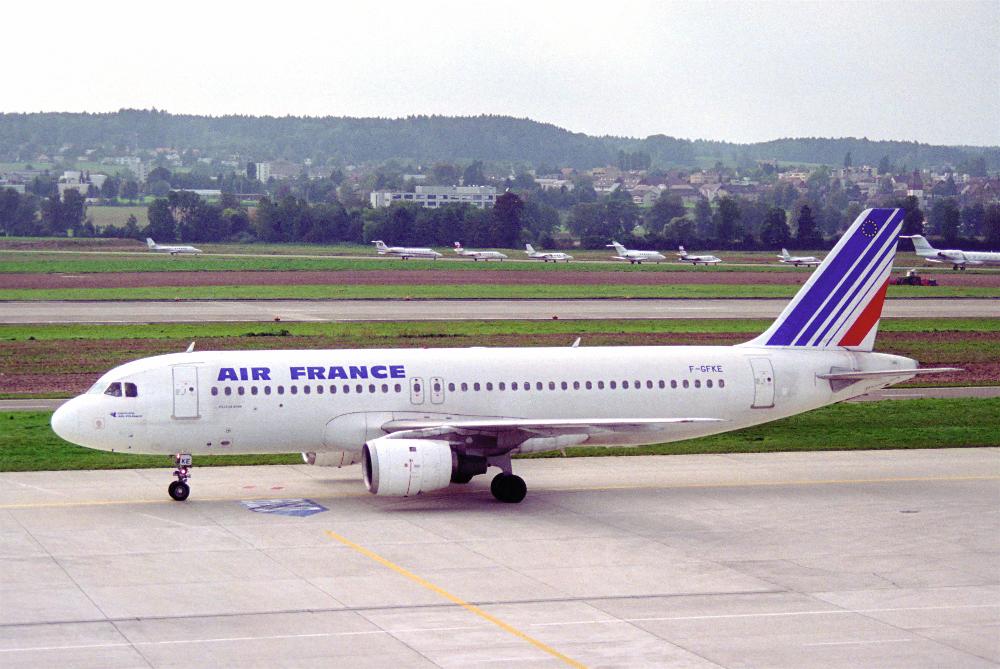
On 30 September 2003, Air France and Netherlands-based KLM Royal Dutch Airlines announced the merger of the two airlines, the new company to be known as Air France-KLM. The merger became reality on 5 May 2004. On 17 October 2007, the creation of a profit and revenue-sharing transatlantic joint venture between Air France-KLM and Delta Air Lines was announced during a press conference. It aimed to exploit transatlantic opportunities to capture a major share of long-haul business traffic from London Heathrow Airport, which opened to unrestricted competition on that day as a result of the "Open Skies" pact between the EU and US. The new transatlantic joint venture marks the Air France-KLM Group's second major expansion in the London market, following the launch of CityJet-operated short-haul services from London City Airport that have been aimed at business travellers in the City's financial services. However, the daily London (Heathrow) to Los Angeles service was not as successful as hoped, and was discontinued in November 2008. Air France introduced the A380 on 20 November 2009 with service to New York City's JFK Airport from Paris' Charles de Gaulle Airport.
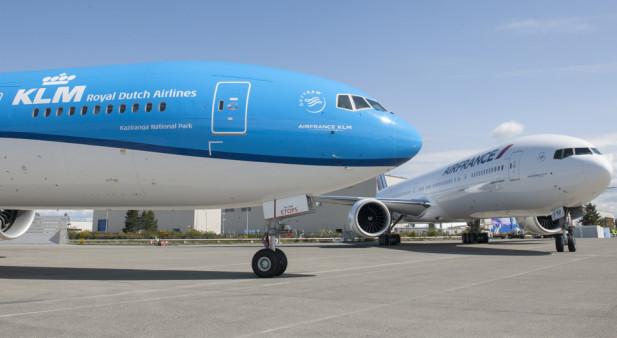
On 21 June 2012, Air France-KLM had announced its decision to cut just under 10% of the total 53,000 workforce (about 5,000 jobs) by the end of 2013 in an attempt to restore profitability. In September 2013, Air France introduced a brand new Economy product along with an improved Premium Economy seat and service. In October 2013, Air France-KLM announced they were writing off the 25% stake in Alitalia, as it was hesitant the struggling carrier would obtain the 300 million euros in financing. The group has denied Alitalia of additional funds as it is currently struggling to restructure itself to profitability with the Transform 2015 plan.
In December 2013, Air France announced that Cityjet no longer meets the short haul needs of the group and is in the process of closing a deal with German firm Intro Aviation by the end of Q1 of 2014. On 4 February 2014, the new business product was unveiled, featuring a fully flat bed from Zodiac Aerospace. The seat will be fitted on Boeing 777 aircraft from June 2014 onwards. Late in 2015, Air France faced a financial crisis, which was exacerbated by a pilot's strike against the airline. In December 2015, Air France announced to retire their last Boeing 747-400 with a special scenic flight on 14 January 2016. The airline operated the 747 in several variants since 1970.
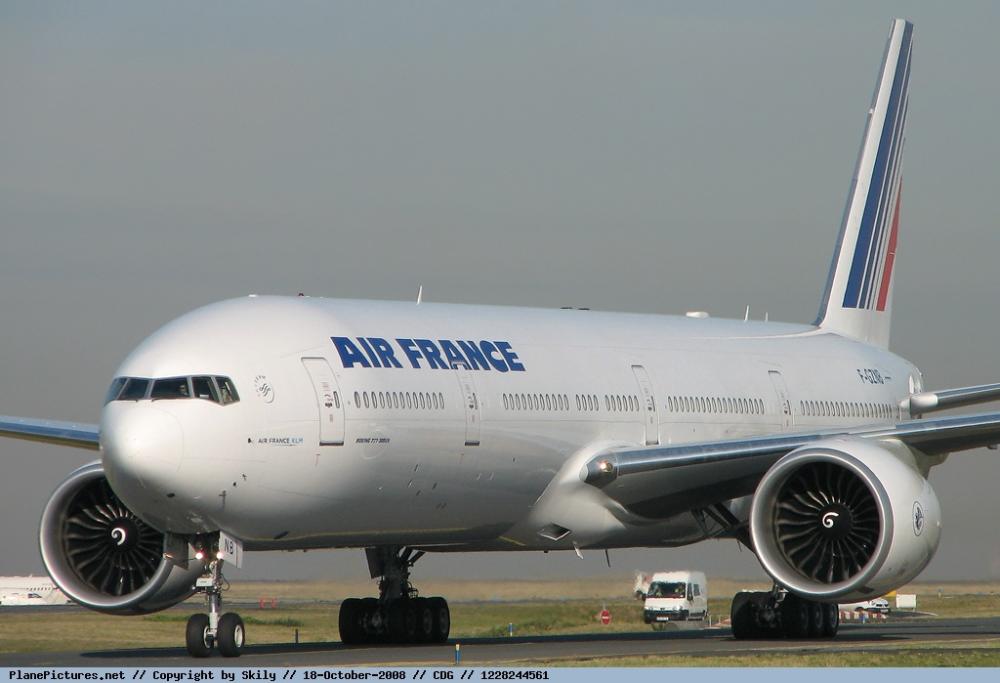
In January 2017, Air France received its first Boeing 787-9. In November 2017, CityJet no longer operated on Air France flights and the affected destinations were served by Air France and HOP! from then on. In July 2017, Air France-KLM entered into a multi-airline strategic partnership with Delta Air Lines, China Eastern Airlines and Virgin Atlantic Airways, solidifying the existing ties between the carriers. Under the agreement Delta and China Eastern are each buying 10% of Air France-KLM while Air France-KLM will buy 31% of Virgin Atlantic.
History Source: Wikipedia.org
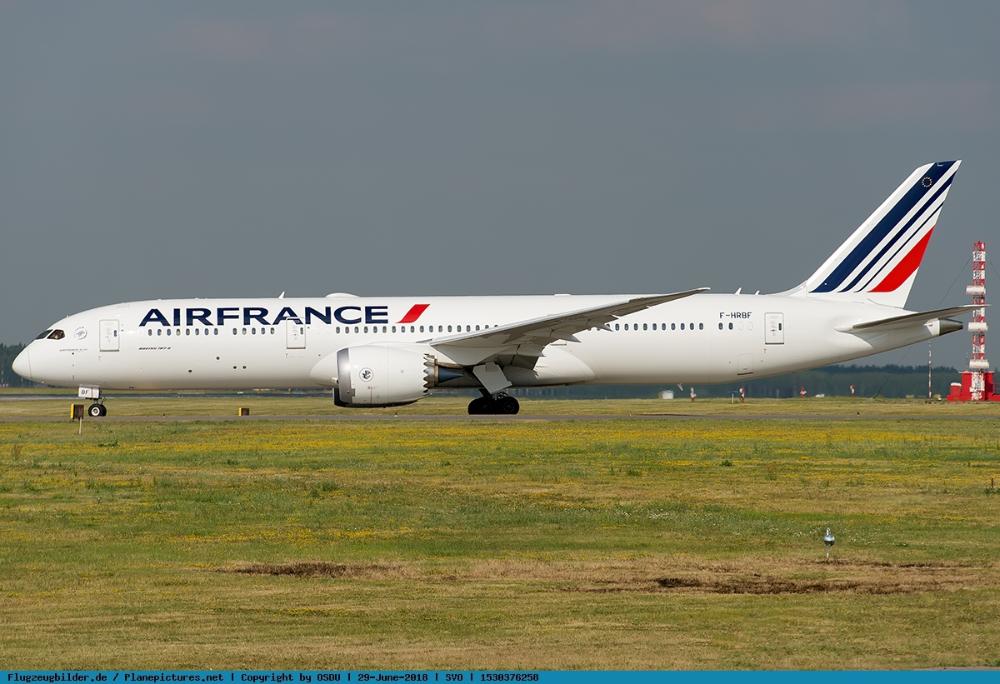
Operations and Destinations 🌍:
The French Airline has it's main bases at Paris, Charles de Gaulle (CDG), as the main hub and with most international traffic and connecting flights operating from here. The second base is Orly (ORY) where Air France also has a major presence together with it's low cost subsidiaries and charter markets. However, due to the merger with KLM, it's also possible to have many of Air France's code-share flights operating or connecting at Amsterdam Schiphol.
The destinations* the airline flies to are listed below:
| Region 🗺️ | Destinations 🌍🌎🌏 |
|---|---|
| ✈France (domestic) | Agen, Ajaccio, Annecy, Aurillac, Bastia, Biarritz, Bordeaux, Brest, Brive, Caen, Calvi, Castres, Clermont, Ferrand, Deauville, Figari, Lannion, La Rochelle, Lille, Limoges, Lorient, Lourdes, Lyon, Marseille, Metz/Nancy, Montpellier, Nantes, Nice, Paris (CDG and ORY), Pau, Perpignan, Quimper, Rennes, Rodez, Rouen, Strasbourg, Tarbes, Lourdes, Toulon, Toulouse |
| ✈Europe | Aberdeen, Amsterdam, Antwerp, Athens, Bari, Basel-Mulhouse-Freiburg, Bergen, Berlin, Bilbao, Billund, Birmingham, Bologna, Bremen, Brussels, Bucharest, Budapest, Cagliari, Catania, Copenhagen, Cork, Dublin, Dubrovnik, Düsseldorf, Edinburgh, Florence, Frankfurt, Geneva, Genoa, Gothenburg, Hamburg, Hanover, Ibiza, Istanbul, Kiev, Kraków, Lisbon, Ljubljana, London, Madrid, Málaga, Malta, Manchester, Milan, Munich, Naples, Nuremberg, Oslo, Prague, Prestwick, Rome, Rotterdam, The Hague, Seville, Sofia, Stockholm, Stuttgart, Turin, Venice, Vienna, Warsaw, Wrocław, Zagreb, Zürich |
| ✈In the Middle East | Tel Aviv, Amman, Beirut, Everan, Teheran, Riyadh, Dubai. |
| ✈Africa | Cairo, Tunis, Algiers, Rabat, Casablanca, Djibouti, Nouakchott, Dakar, Bamako, Conakry, Freetown, Niamey, Ouagadougou, N'Djamena, Abuja, Lagos, Cotonou, Lome, Abidjan, Port Harcourt, Douala, Malabo, Yaounde, Bangui, Libreville, Kinshasa, Brazzaville, Luanda, Nairobi, Antananarivo, Maurice, Saint Denis de la Reunion, Johannesburg,Cape Town. |
| ✈The America's and the Pacific | New York, Boston, Washington, Atlanta, Miami, Detroit, Chicago, Minneapolis, Houston, San Francisco, Los Angeles, Vancouver, Montreal, Toronto, Mexico City, Cancun, Havana, San Jose, Panama City, Caracas, Bogota, Port au-Prince, Saint Dominique, Punta Cana, St Martin, Point a Pitre, Porte de France, Cayenne, Rio de Janeiro, São Paulo, Montevideo, Buenos Aires, Santiago de Chile, Lima. Papete (Pacific Ocean) |
| ✈India and Asia | Mumbai, Delhi, Bangalore, Bangkok, Singapore, Ho-Chi-Minh-City, Hong Kong, Guangzhou, Wuhan, Shanghai, Beijing, Taipei, Osaka, Tokyo and Seoul. |
*Destination list is for reference only. Please check directly with the airline for updates.
*Note some destinations are only seasonal.*Correct info as of 20119.
Fleet ✈️:
Air France has one of the biggest fleets in Europe with over 180 planes, with many more on order, new generation aircraft with the latest technologies advancements in comfort, safety and communications. Air France is currently submerged in a fleet replacement programme. It aims to deliver new aircraft through to 2025. It's also worth noting that domestic and regional European routes can be operated in codeshare with it's affiliate airline, Hop! which uses CRJ1000, ATR42 and Embraer 190 aircraft. Below is the current fleet* of Air France at the time of publishing:
| Network 🌐 | Aircraft ✈️ |
|---|---|
| ✈Short and Medium haul | Airbus A318, A319, A320, A321. Boeing B787-9 on selected high demand routes. |
| ✈Long haul | Airbus A330, A340-300 (to be retired by 2020), A350, A380 (ultra long flights and high demand). Boeing B777-200, B777-300ER, B787-9 |
*Correct fleet info as of
Air France Photo Slide 📷:
Air France Safety Video (B777-300ER) 🎬:
Reviews ⭐:
 |  |
|---|---|
| ✅Major Operating Airline in France and the French Colonies. | 👎Ageing fleet (currently being replaced) |
| ✅Member of the Skyteam Alliance for mileage redemption. | 👎 Limited routes to Asia |
| ✅Number of destinations in Africa | 👎No flights to Australia or New Zealand. |
| ✅Free online check-in and seat selection 30h before. | 👎Configuration on Boeing 777-300 is 3-4-3 in Economy (less legroom). |
| ✅ Inclusive of meals/snacks/drinks on all flights (operated by Air France) | |
| ✅Multiple options for connecting flights via Paris or Amsterdam |










.png)